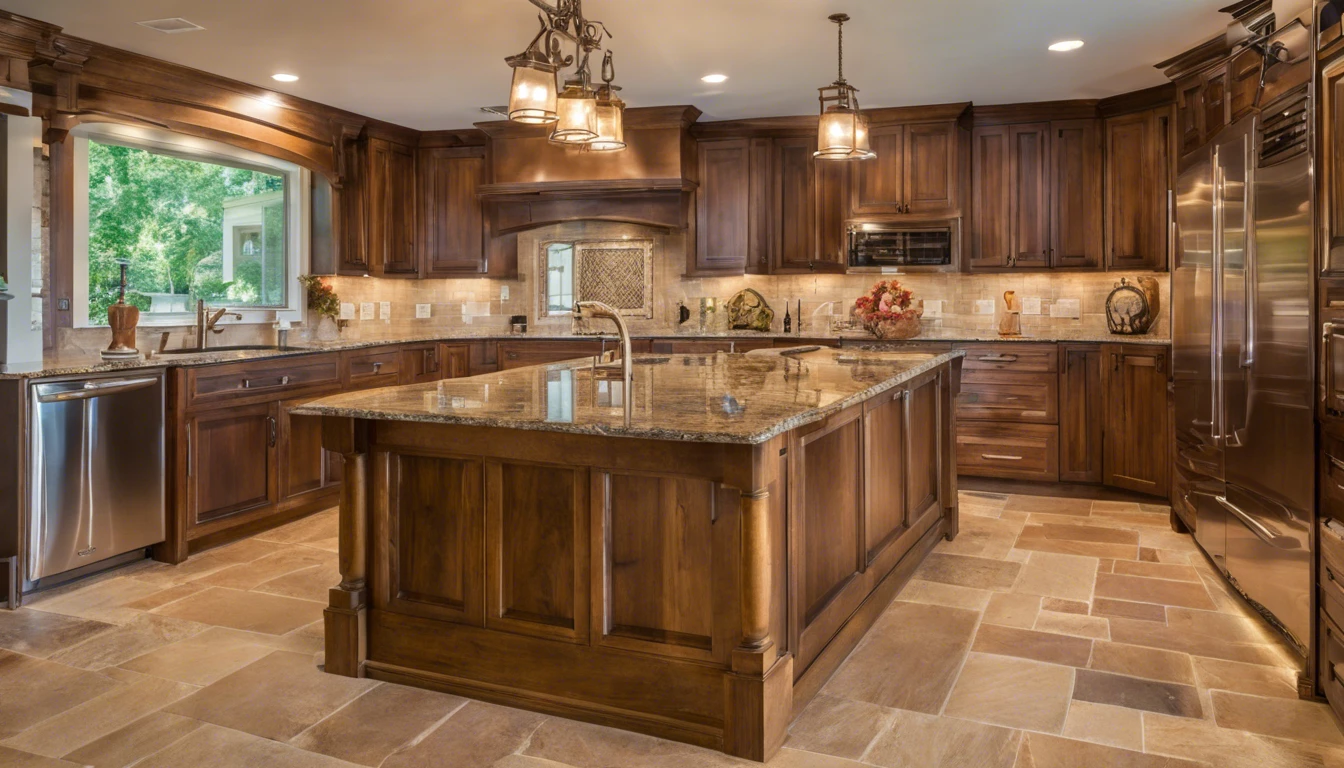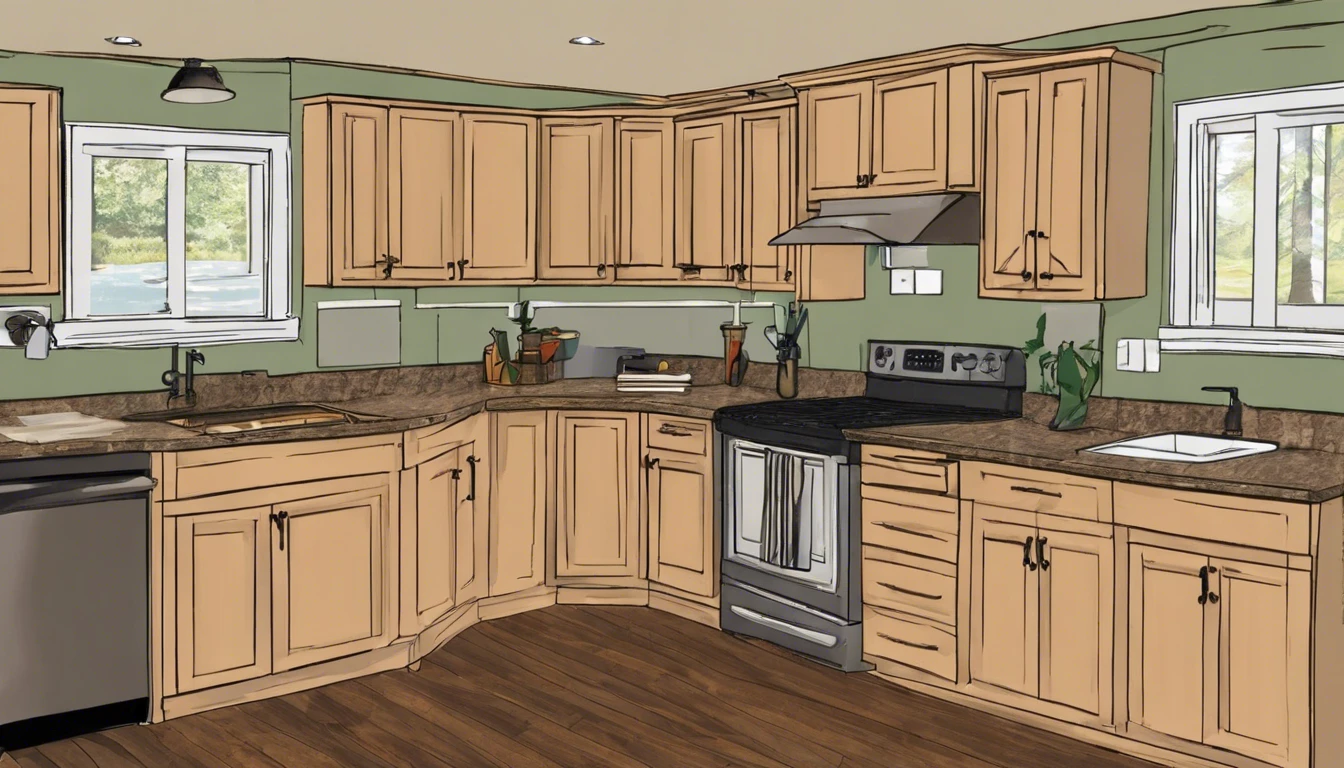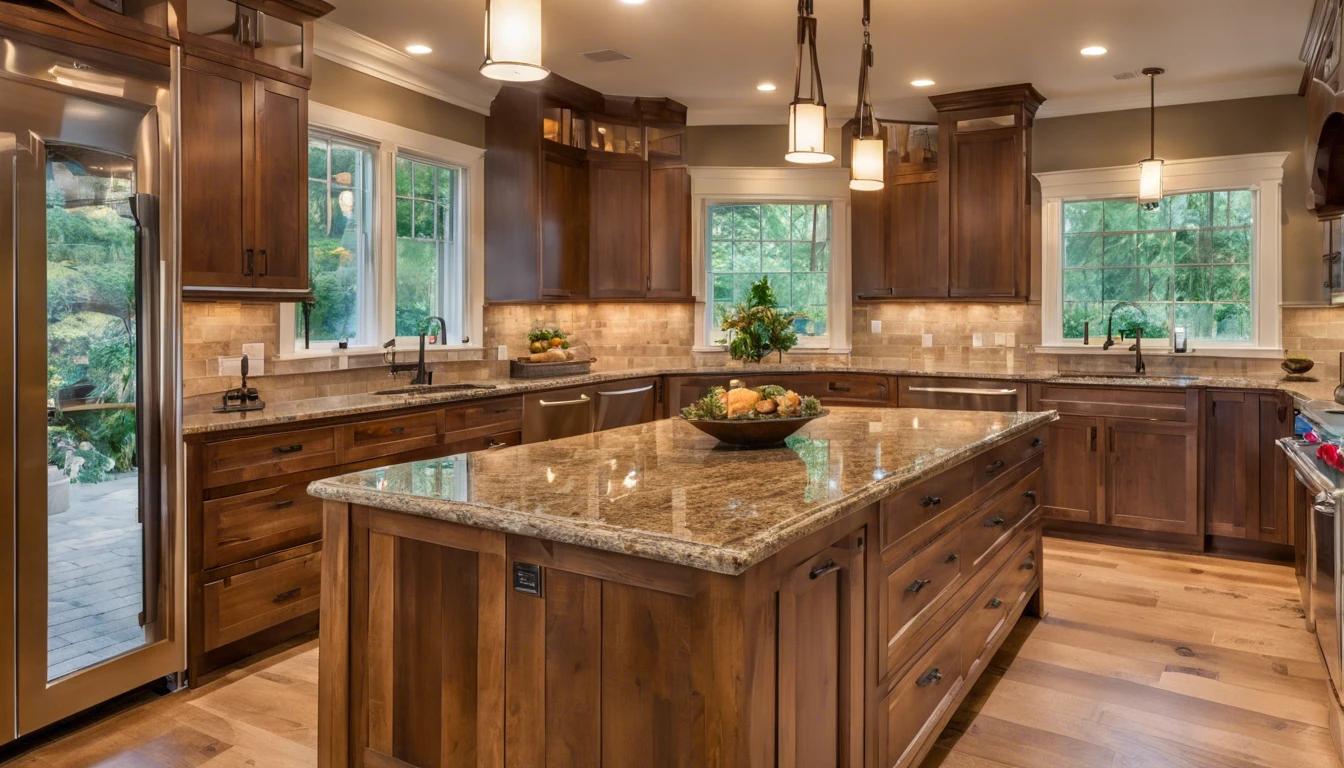What is the difference between a remodel and a Reno?
Renovation involves restoring or repairing your home to its former condition or better, often without altering the original design. Remodeling, however, involves changing the structure or form of a space, such as adding walls or changing the layout.
Ever found yourself scratching your head, wondering whether you should remodel or renovate your home? You're not alone. Many homeowners find these terms confusing, and rightly so. But worry not, because we're about to dive deep into the world of home makeovers, and by the end of this article, you'll be tossing around 'renovate' and 'remodel' like a pro!

Understanding the difference between renovation and remodeling is crucial for homeowners planning to update their living spaces. Renovation involves restoring or repairing your home to its former condition or better. It often includes painting, repairing, or re-installing existing structures without altering the original design. On the other hand, remodeling involves changing the structure or form of a space. This could mean removing or adding walls, creating new rooms, or completely changing the layout of a kitchen or bathroom.
The home improvement industry has seen significant growth over the years, with spending increasing from $328 billion in 2019 to an estimated $485 billion by 2024, as reported by the Joint Center for Housing Studies of Harvard University. The National Association of Realtors highlights the popularity of kitchen renovations, which saw a 25% increase in spending in 2021, showcasing homeowners' desire to invest in high-traffic areas (National Association of Realtors).
Moreover, the return on investment (ROI) for remodeling projects remains strong, with hardwood floor refinishing and new wood flooring offering over a 100% ROI, demonstrating the financial benefits of certain upgrades (RubyHome). Exterior projects like new roofing and garage doors also provide a significant return, emphasizing the value of both aesthetic and functional improvements.
As the median age of homes in the U.S. is 39 years, and over 50% of U.S. houses were built before 1980, it's no surprise that 55% of homeowners have undertaken renovation projects in the past year (Today's Homeowner). With an increasing focus on enhancing living spaces, the distinction between renovation and remodeling becomes an essential consideration for homeowners aiming to improve their homes' functionality, aesthetics, and market value.

Real-Life Examples
Real-Life Examples of Home Improvement Success
Engaging in home improvement projects can significantly enhance the functionality, aesthetics, and market value of a home. Across the United States, homeowners are investing in their living spaces, with remarkable outcomes that underscore the benefits of both renovation and remodeling. Let's explore some real-life examples that exemplify the transformative power of home improvements.
In 2022, Americans collectively spent an estimated $427 billion on home improvement projects, reflecting a robust interest in upgrading residential spaces. Among these projects, kitchen renovations and bathroom remodels stood out as the most popular, with homeowners seeking to modernize these high-traffic areas to suit contemporary lifestyles and preferences. The success of these projects is not just in their ability to refresh a space but also in the substantial return on investment (ROI) they can offer. For instance, hardwood floor refinishing and new wood flooring have been shown to provide over a 100% ROI, making them financially advantageous upgrades (Architectural Digest).
The growing trend towards DIY home improvement projects also highlights the creativity and resourcefulness of homeowners. With 60% of individuals undertaking a DIY project in 2022, the movement towards self-led renovations demonstrates a desire to personalize living spaces while also potentially reducing costs. Notably, lumberyard sales for DIY remodels nearly reached $138 billion, indicating the scale and investment homeowners are willing to make to achieve their vision (Today's Homeowner).
Moreover, the home improvement industry's expansion is evident in the projected sales, which are expected to surpass $620 billion by 2025. This growth is supported by the increasing number of older millennials engaging in renovations, making them the generation with the highest participation in home improvement activities. Their projects often aim at enhancing the quality of life and adding value to their homes, with 93% of homeowners feeling they had a better quality of life after completing renovations. Exterior remodels, although potentially more costly than interior projects, have also proven to be worthwhile investments, offering significant returns and enhancing curb appeal (Today's Homeowner).
In conclusion, the real-life examples of home improvement projects across the U.S. demonstrate the myriad benefits of both renovation and remodeling. From increasing home functionality and aesthetics to achieving impressive financial returns, the motivations and outcomes of these projects highlight the continued investment in residential upgrades. As the industry grows, so does the opportunity for homeowners to transform their living spaces into personalized sanctuaries that reflect their preferences and lifestyles.

What's Right for You?
Deciding between renovation and remodeling depends on your goals, budget, and the current state of your home. If your aim is to enhance your home's functionality and aesthetic without changing its structure, renovation might be the right choice. Renovation projects can include painting, updating fixtures, or refinishing floors. These projects often require a smaller budget and can significantly improve the look and feel of your home.
On the other hand, if you're looking to change the layout of your home, add rooms, or make structural changes, remodeling is the way to go. Though more expensive and extensive than renovations, remodeling projects can drastically alter your living space to better meet your needs.
Before starting your project, consider your budget. Remember that while DIY projects can save money, they require time, skills, and sometimes, tools you might not have. Furthermore, 80% of homeowners exceed their initial budget by at least $500, so it's crucial to have a realistic budget and a contingency fund.
Research is key. Utilize resources like home improvement store websites, YouTube, and manufacturer sites to gather information, learn new skills, and compare products. Remember, 55% of Millennial DIYers turn to YouTube for home improvement information, making it a valuable resource for tips and tutorials.
Lastly, consider the return on investment (ROI). Projects like hardwood floor refinishing, new wood flooring, and new roofing offer over a 100% ROI, making them not only aesthetically pleasing but financially wise choices.
In summary, whether to renovate or remodel depends on your personal goals, budget, and the specific needs of your home. Careful planning, research, and budgeting can help ensure your project enhances your home’s value and your quality of life.

Planning and Budgeting
Planning and budgeting for a home improvement project are critical steps that can significantly impact its success and your financial well-being. Whether you’re considering a minor update or a major remodel, understanding how to effectively plan and budget is essential. Here's a comprehensive guide to help you navigate these processes:
Understanding Your Goals and Priorities
Before diving into any project, it’s crucial to have a clear understanding of your goals. Are you looking to increase your home’s value, improve functionality, or simply update the aesthetics? Knowing what you want to achieve will help guide your decisions throughout the project. According to the National Association of the Remodeling Industry (NARI) and REALTORS®, homeowners remodel for various reasons, including upgrading worn-out surfaces, adding new features, and desiring a change.
Setting a Realistic Budget
Setting a realistic budget is perhaps the most important aspect of planning your home improvement project. It’s not uncommon for homeowners to underestimate the costs involved. To avoid this pitfall, start by researching the average cost of similar projects. Websites like Houzz provide insights into what homeowners spent on renovations in recent years, with kitchen renovations being among the most popular and expensive.
Additionally, it's wise to allocate a portion of your budget for unexpected expenses. Industry experts suggest adding a 20% buffer to your initial budget to cover any surprises that may arise during the project.
Financing Your Project
Once you have a budget in mind, consider how you’ll finance the project. Options include savings, home equity loans, personal loans, or credit cards. Each option comes with its pros and cons, so it's essential to choose the one that aligns with your financial situation. For instance, The Joint Center for Housing Studies of Harvard University provides valuable insights into the financing trends in the home improvement industry.
Prioritizing Projects for Maximum ROI
If your goal is to increase your home’s value, prioritize projects known for providing a high return on investment (ROI). According to RubyHome, interior projects like refinishing hardwood floors and installing new wood flooring can offer over 100% ROI. Similarly, exterior improvements such as new roofing and garage door replacements also yield significant returns.
Hiring Professionals vs. DIY
Deciding whether to hire professionals or take on the project yourself is another critical consideration. While DIY projects can save money, they might not always be the best choice, especially for complex renovations. Assess your skills realistically and consider the time commitment required for a DIY project. For many homeowners, hiring professionals ensures the job is done right and can ultimately save time and money. The National Association of the Remodeling Industry (NARI) offers resources for finding qualified professionals and understanding the benefits of hiring experts.
Planning for the Unexpected
No matter how well you plan, unexpected challenges can arise during a home improvement project. Whether it’s discovering hidden problems once the work begins or delays due to material shortages, being flexible and prepared for changes is key. Stay in close communication with your contractor and have a contingency plan in place for any unforeseen issues.
By following these steps and utilizing the resources available, you can effectively plan and budget for your home improvement project, ensuring a smoother process and a successful outcome.

The Bottom Line
The Bottom Line
Embarking on a home improvement journey can be both exhilarating and overwhelming. With the home renovation industry projected to reach a staggering $485 billion by 2024 (Joint Center for Housing Studies of Harvard University), it's clear that homeowners are increasingly investing in making their living spaces more comfortable, functional, and aesthetically pleasing. Whether it's the allure of transforming a kitchen into a culinary haven or enhancing the curb appeal with new roofing, the motivations are as varied as the projects themselves.
The surge in DIY projects, particularly during the pandemic, underscores a growing trend of homeowners taking renovation into their own hands. With a 23.8% market growth in 2020 and 2021, and homeowners spending upwards of $406 billion in 2021 on improvements (National Association of Realtors), it's evident that the desire to personalize one's space is stronger than ever.
However, it's not just about aesthetics or personal satisfaction; it's also about financial prudence. The average return on investment (ROI) for remodeling projects stands at 69%, with certain projects like hardwood floor refinishing and new wood flooring offering an astonishing ROI of over 100% (Today's Homeowner). This indicates that strategic home improvements can not only enhance your living experience but also significantly boost your home's value.
Moreover, the data reveals a fascinating insight into homeowner behavior and market trends. For instance, smaller kitchen updates tend to yield better ROI compared to complete overhauls, and exterior projects generally offer a higher ROI, about 23% more, than interior ones. This suggests that homeowners looking to maximize their investment should consider prioritizing these types of projects.
As the industry continues to flourish, with a projected 17% increase to reach $432 billion in 2022 (RubyHome), the opportunities for homeowners to enhance their properties are vast and varied. Whether you're a long-term homeowner or a recent buyer, the key to a successful home improvement project lies in careful planning, realistic budgeting, and choosing projects that offer both personal satisfaction and financial return.
In conclusion, the home improvement journey is as much about creating a space that reflects personal taste and lifestyle as it is about making smart investment choices. With the right approach, homeowners can not only enjoy a more beautiful and functional living space but also reap the benefits of their investments for years to come.







